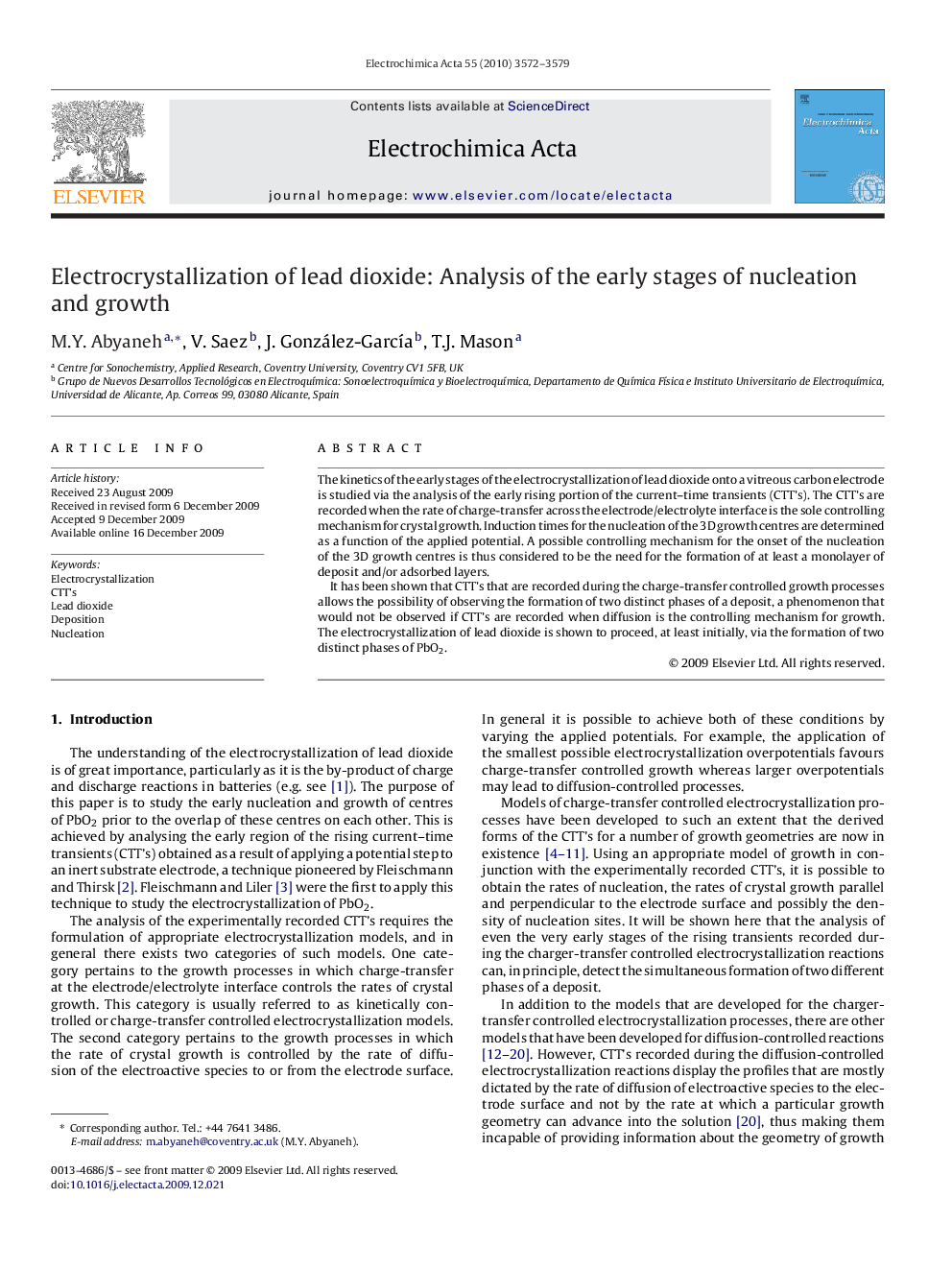| Article ID | Journal | Published Year | Pages | File Type |
|---|---|---|---|---|
| 191002 | Electrochimica Acta | 2010 | 8 Pages |
The kinetics of the early stages of the electrocrystallization of lead dioxide onto a vitreous carbon electrode is studied via the analysis of the early rising portion of the current–time transients (CTT's). The CTT's are recorded when the rate of charge-transfer across the electrode/electrolyte interface is the sole controlling mechanism for crystal growth. Induction times for the nucleation of the 3D growth centres are determined as a function of the applied potential. A possible controlling mechanism for the onset of the nucleation of the 3D growth centres is thus considered to be the need for the formation of at least a monolayer of deposit and/or adsorbed layers.It has been shown that CTT's that are recorded during the charge-transfer controlled growth processes allows the possibility of observing the formation of two distinct phases of a deposit, a phenomenon that would not be observed if CTT's are recorded when diffusion is the controlling mechanism for growth. The electrocrystallization of lead dioxide is shown to proceed, at least initially, via the formation of two distinct phases of PbO2.
